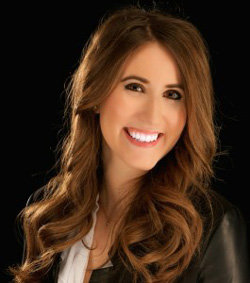Q&A: NMC’s Samantha Becker on the Future of Higher Ed Tech
The latest Horizon Report from the New Media Consortium (NMC) gives deep insight into how education is being shaped by technology.
EdTech spoke with one of the key figures behind the Horizon report — the NMC’s senior director of publications and communications, Samantha Becker — to learn a little more about what goes into these influential reports.

"As technology evolves, so will the definition and possibilities for BYOD," says Samantha Becker, NMC’s senior director of publications and communications.
EDTECH: What are some of the new findings in this year's report that most excited you?
BECKER: I was very excited to see affective computing acknowledged by the expert panel in such a major way. The ability for machines to be programmed to recognize the nuances of human behaviors and emotions associated with learning — and respond accordingly — is particularly exciting. As courses and activities are increasingly held online, there is a demand for more personalization and more sophisticated interactions.
It was also refreshing to write about the challenge "Balancing Our Connected and Unconnected Lives." I know some people still associate the NMC Horizon Report purely with technology advocacy, but it really is about how educational technology use can be in the service of implementing innovative approaches to teaching and learning. What kinds of learning experiences can technology foster that would not be replicable without the technology? Helping both educators and students navigate the path of mindful technology use is tricky, but higher education institutions must lead the way.
EDTECH: Name one trend on previous years’ lists that's not on 2016's because it's already become status quo. What was it like to see the evolution of its adoption?
BECKER: “Increasing Cross-Institution Collaboration” was featured last year as a long-term impact trend, and universities and colleges are indeed still joining forces on large-scale projects and initiatives, but it is very much expected that organizations will work together to benefit the whole of higher ed. Sharing best practices and resources, piggybacking off each other's work and building upon it is a necessity for spreading innovation more efficiently and effectively.
EDTECH: Virtual Reality and Augmented Reality made this year's list. However, we've seen Google Glass come and go. What makes this generation of VR and AR different?
BECKER: It's not about a specific product; it's about the experience that VR and AR can foster. Both are geared toward creating an immersive experience for learners, allowing them to engage with environments and objects that they may otherwise never have access to. Simulations enable medical students to practice activities such as complex surgeries, for example, before they operate on real people. It's about gaining real-world experience, regardless of physical factors and limitations.
EDTECH: Is there an element holding makerspaces back from mass adoption? Or are we already in the midst of a rapid incline toward them becoming mainstream?
BECKER: I'd say we're in the midst of an incline that is also being met with a lot of excitement, but it's more gradual than rapid. The first university makerspace was born at MIT in 2006, and it's been a decade since then. I think institutions are catching on that effective makerspaces don't have to be extremely expensive and filled with all of the latest gadgets. Equipping a space with any kind of tools that encourage creativity through prototyping, development and iteration is a big plus. I also think this trend ties in with the evolving role of campus libraries. As these libraries are moving print materials into storage, there is room for them to become innovation and collaboration hubs. So we're seeing more academic libraries become homes to makerspaces.
EDTECH: Wearables and the Internet of Things didn't get their own headings this time. Where do these big technology topics fit alongside the other 6 offered in this year's report?
BECKER: I think both IoT and Wearable Tech have a place in BYOD. As the report mentions, BYOD is expanding beyond just bringing laptops, smartphones and tablets to school. IoT makes it possible to connect all sorts of objects, and wearables are an extension of the productivity devices we use — for example, smart watches. As technology evolves, so will the definition and possibilities for BYOD.









